Every now and then we like to try a more 'traditional' science experiment and walking water is one I've been trying to catch on video for ages. This super simple experiment works quickly and is very impressive. The science behind it, can be a bit tricky for little ones, but you could start by spilling a little bit of water on a table and demonstrating how the paper towel absorbs the water.
Materials
Glasses or jars of the same size
Paper towel
Water
Food colouring
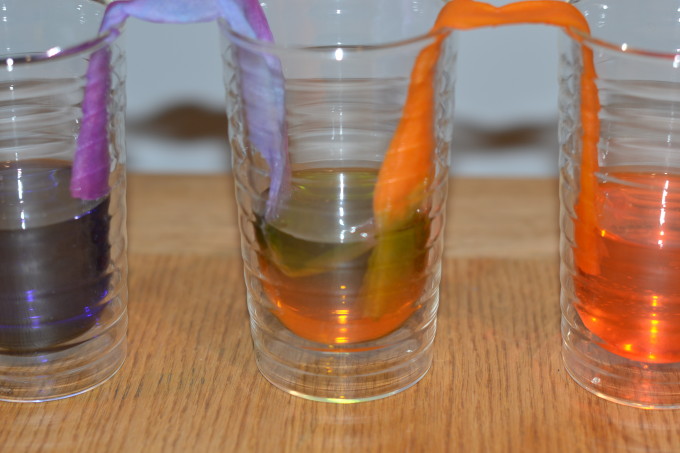
Method
Place coloured water into the glasses on the outside, leaving the middle one empty.
Cut a piece of kitchen roll in half and fold up each.
Place a piece of kitchen roll so it runs from the glasses with water into the empty one.
Sit back and watch.
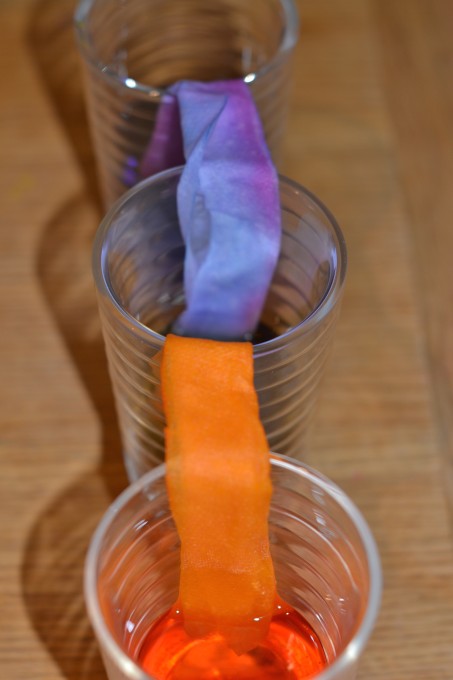
Extension Activities
Can you predict the colour of the water in the middle glass.
Is it faster if you wet the paper towel first?
Would this work if you used a more viscous liquid, vegetable oil for example?
What happens if you use a thicker paper towel?
Why does this work?
The water travels up the kitchen roll by a process called capillary action. The water moves against gravity along the tiny gaps within the fibres of the kitchen roll. Water molecules bind to the paper towel through a process called adhesion, but also stay close to each other as they are cohesive. The gaps in the towel act like capillary tubes, pulling the water upwards.
Another example of this process is where water travels from the roots of a plant to the leaves, we call this transpiration, which is driven by capillary action.
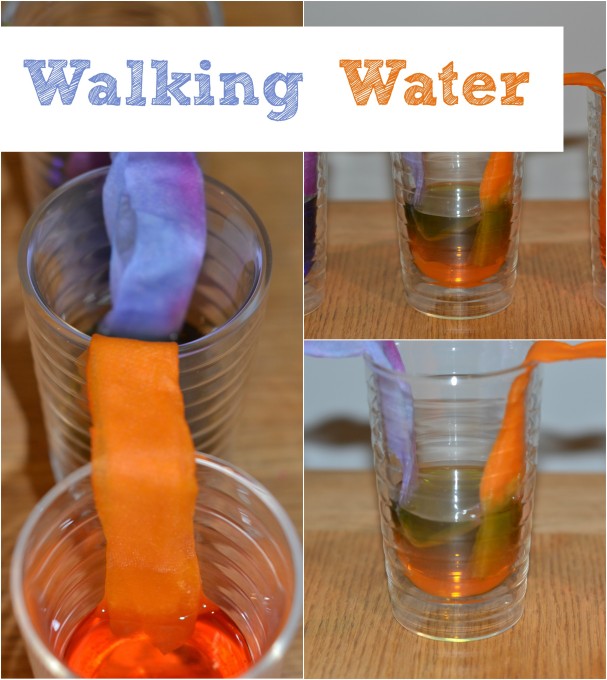
Last Updated on April 5, 2016 by Emma Vanstone

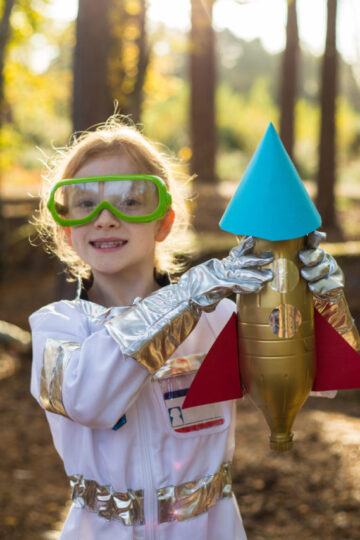

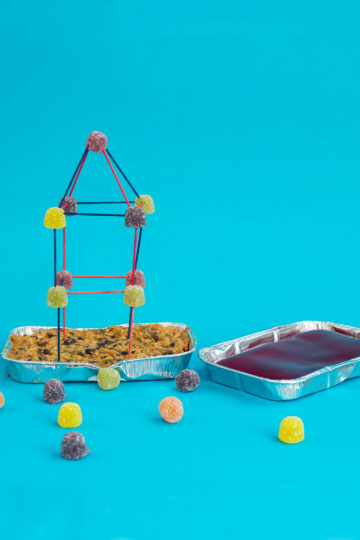
Delilah nival says
a producer for walking water
Alice sanders says
its an amazing easy last minute science project
Kayleigh Mitchells says
love this but can't do it since someone else did it are there any similar ones I need it asap
Addrina says
Ya u can do this
livy says
can I see a sience board about this?
Sheila couch says
I've tried this several times. The colors are mixing in the wrong cups. For example I have a red cup, empty one in the middle, then a blue at the other end to make purple. It's making purple in the blue cup. The middle cup becomes blue instead of mixing with the red and turning purple. What am I doing wrong?
Addrina says
What you are doing wrong is you need to put them farther apart on your sides then they will not mix
DORIS BELTRE says
My son is doing this project and although the blue and read didnt turn purple, (it turn a very light color) we are still going to continue with it. The purpose of the project is to show how water travels, right. The purpose isnt to see what color the next color will be, although the colors are beautiful : ) We did 7 cups instead. It looks great!!
thilal hasod says
this is the most coolest thing I have ever seen! I can really use this for a science fair!
thilal hasod says
man this experiment is taking a long time to do for a science fair. I wish I can change my experiment for my science fair, but apparently I CAN'T!!!!!!!!!!!!!!!!!!!!!!!!!!!!!!!!!!!!!!!!!!!!!!!!!!!!!!!!!!!!!!!!!!!!!!!!!!!!!!!!!!!!!!!!!!!!!!!!!!!!!!!!!!!!!!!!!!!aaaaaaaaaaaaaaaaaaaaaaaaaaaaaaaaa
Janice Garcia says
Thanks to Sheila Couch... I need to experiment where the colors go to make the correct colors in the school science fair... How sad how no one answered Sheila Couch's question... I guess I have to guessing what goes where...
gabby cords says
I'm going to do this for my science project this year its about to look lit!
G-money says
I'm about to do a project on this so its about to be lit on my board! 🙂
Shraddha .s. anchi says
Interesting about science and also curiousness !! Wonderful experiment can do with home supplies..
Rodo says
Good prediction
Rodo says
I’re gonna use it